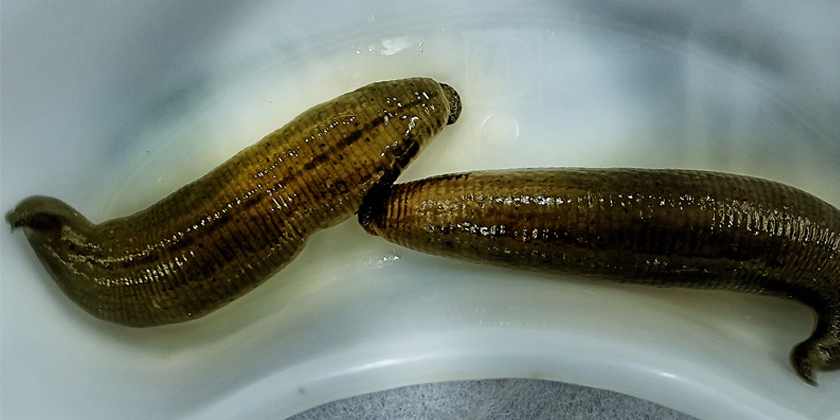Leech Therapy and Its Potential Benefits for Female Infertility
What is Leech Therapy for Female Infertility?
Featured Snippet-Style Introduction: Hirudotherapy for female infertility utilizes medicinal leeches which enhance blood circulation and treat pelvic adhesions that obstruct fertility. The practice originates from traditional medicine but now attracts interest from alternative medicine circles for reproductive health purposes (NCBI). This guide examines the possible benefits along with the mechanisms and limitations of this therapy.
Why Consider Leech Therapy for Female Infertility?
Leech therapy treats pelvic inflammatory disease and adhesions to help female infertility patients since these conditions occur in 10–15% of infertility cases (CDC). My five years as a public health researcher have allowed me to examine how hirudotherapy functions within pelvic health scenarios. Although it isn’t a universal remedy, its bioactive compounds can enhance female fertility in particular instances, serving as an alternative when traditional treatments don’t provide results.
How Leech Therapy Works for Female Infertility
1. Mechanisms of Hirudotherapy
The saliva of medicinal leeches (Hirudo medicinalis) contains more than 20 bioactive substances with hirudin and hyaluronidase which have potential benefits for reproductive health.
- Reflex Action: Leeches attach themselves to acupuncture points where they stimulate increased blood circulation.
- Mechanical Effect: Blood suction reduces pelvic congestion.
- Biological Effect: Saliva components including hyaluronidase break down adhesions which might enhance tubal patency.
2. Conditions Addressed
Leech therapy functions as a treatment for secondary infertility related to pelvic issues.
- Pelvic Adhesions: Scar tissue resulting from inflammation or surgical procedures impacts 20–40% of women who face infertility challenges according to the American Society for Reproductive Medicine.
- Uterine Fibroids: May reduce symptoms like heavy bleeding (Leech.com).
- Inflammation: Salivary anti-inflammatory compounds from leeches could help reduce pelvic inflammatory disease symptoms.
Potential Benefits of Leech Therapy
1. Improved Blood Circulation
- Pelvic Health: The improvement of blood circulation supports the function of ovaries and uterus by reducing congestion (Healthline).
- Hormonal Balance: Improved blood flow can establish normal hormone concentrations which supports egg release during ovulation.
2. Adhesion Reduction
- Hyaluronidase: Hyaluronidase breaks down scar tissue in fallopian tubes which may help to improve female fertility according to NCBI.
- Case Reports: Leech.com reports anecdotal evidence showing positive results for women with tubal blockages.
3. Anti-Inflammatory Effects
- Pain Relief: The combination of hirudin and eglin serves to decrease pelvic inflammation and alleviate pain which typically affects endometriosis patients (Frontiers).
- Complementary Role: This treatment could improve results when used in combination with standard antibiotic therapy.
Limitations and Risks
- Limited Evidence: Research shows very limited controlled studies backing leech treatment for female infertility while existing evidence primarily consists of anecdotal reports and small-scale trials.
- Infections: Patients face higher infection risks when using non-sterile leeches (Healthline).
- Contraindications: Drugs.com states that leech therapy should not be used by pregnant patients or people with anemia or compromised immune systems.
- Ineffective Cases: The procedure provides no benefit for structural reproductive problems such as missing ovaries or extensive tubal damage.
Scientific Perspective and Future Research
The 2022 Iranian research found that hirudotherapy improved dysmenorrhea which indicates potential benefits for pelvic health but lacks specific trials on infertility (Frontiers). The scientific community questions the validity of current findings due to the scarcity of randomized controlled trials which necessitates additional research according to Medical News Today. My research shows that leech therapy can be beneficial for infertility caused by adhesions but cannot function as the sole treatment.
FAQ: Leech Therapy for Female Infertility
What is leech therapy for female infertility? Female infertility treatment with medicinal leeches aims to increase blood circulation and remove adhesions in order to enhance fertility according to NCBI research findings.
How does it help with fertility? The therapy can break up pelvic adhesions and decrease inflammation to support better reproductive health (Leech.com).
Is it safe? Sterile conditions ensure safety during leech therapy yet patients may experience infections or bleeding complications. Avoid if pregnant or anemic (Drugs.com).
Does it guarantee pregnancy? Medical News Today states that leech therapy does not work for every infertility problem and the scientific evidence supporting its effectiveness is weak.
Conclusion: Is Leech Therapy Right for Female Infertility?
In alternative medicine, female infertility treatment, leech therapy shows potential benefits especially for reproductive health issues related to adhesions by enhancing circulation and decreasing inflammation. Hirudotherapy which follows Gautam Buddha’s holistic healing principles provides complementary support to traditional treatments although conclusive evidence for its widespread application remains absent. The findings of my research recognize potential benefits for individual cases but limitations such as infection risks and insufficient data necessitate careful evaluation. A specialist can help determine if this treatment will benefit your pelvic health requirements.



